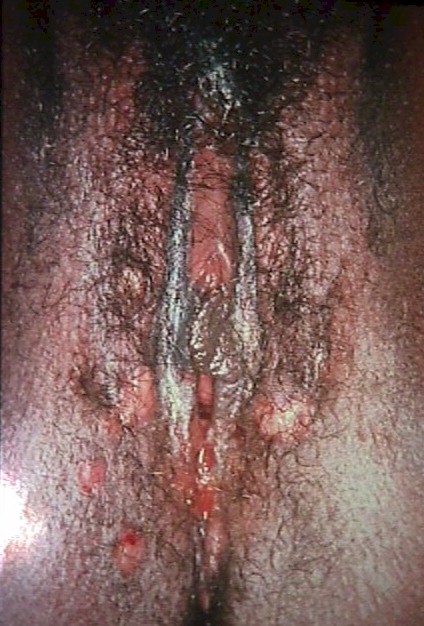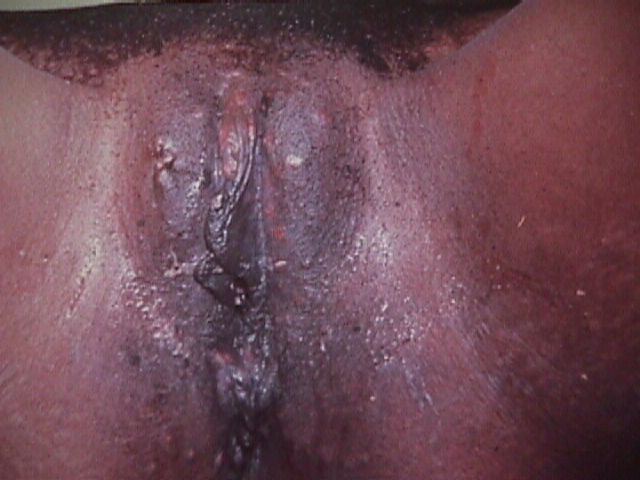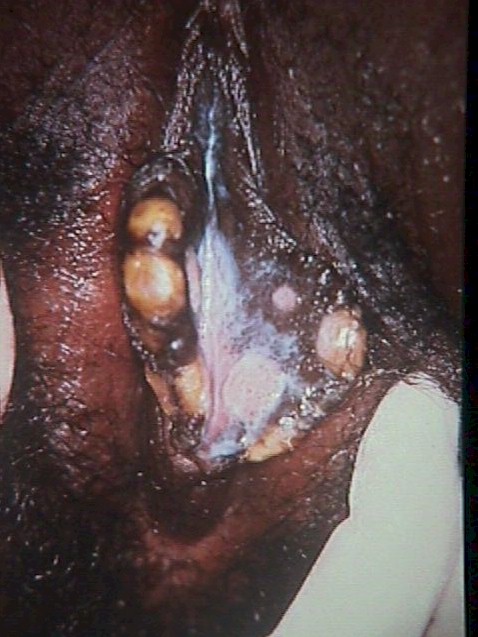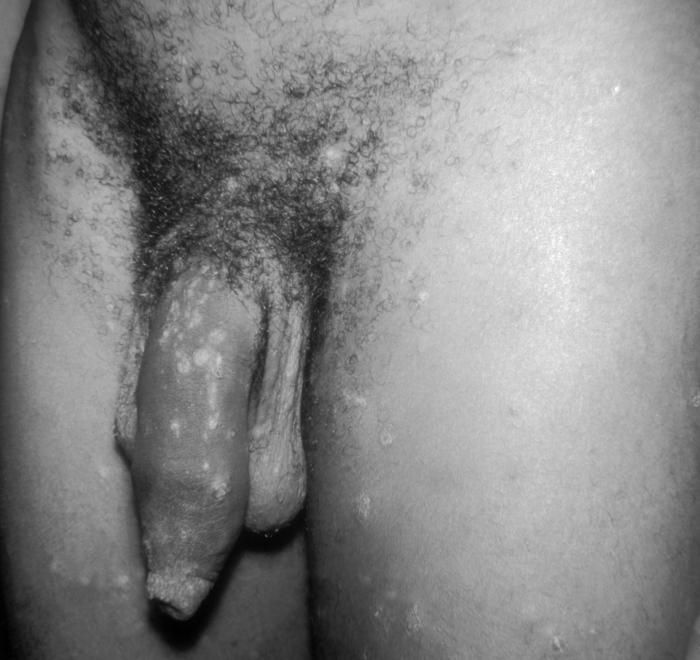|
Condyloma Lata (Secondary Syphilis) |

|
Examination of surface scrapings of condyloma lata lesions under darkfield microscopy will show the typical spirochetes. Serologic test for syphilis (VDRL, RPR) will be positive. Optimal treatment is:
But for those allergic to penicillin, you may substitute:
If the patient is pregnant, tetracyclines should not be used. Should the pregnant patient also be allergic to penicillin, desensitization is recommended by many, but circumstances may not allow for that. Of primary importance is that sufficient antibiotic gets across the placenta and to the fetus. If not, fetal syphilis will be insufficiently treated. Within 24 hours of treatment, you may observe the Jarisch-Herxheimer reaction in patients. This reaction consists of fever, muscle aches and headache and may be improved by concurrent treatment with antipyretic medication. This reaction is more common among those treated for primary syphilis than secondary. Both the patient and her sexual partner(s) need treatment. Otherwise, she will be re-infected, even if the initial treatment is successful. Further, secondary syphilis, untreated, can lead to permanent neurologic injury and death, so full treatment of all sexual partners is very important. Long term followup is needed to make sure that the syphilis is completely gone from the patient and her sexual partner(s). The means to do that is complicated and current CDC recommendations are best followed. |




